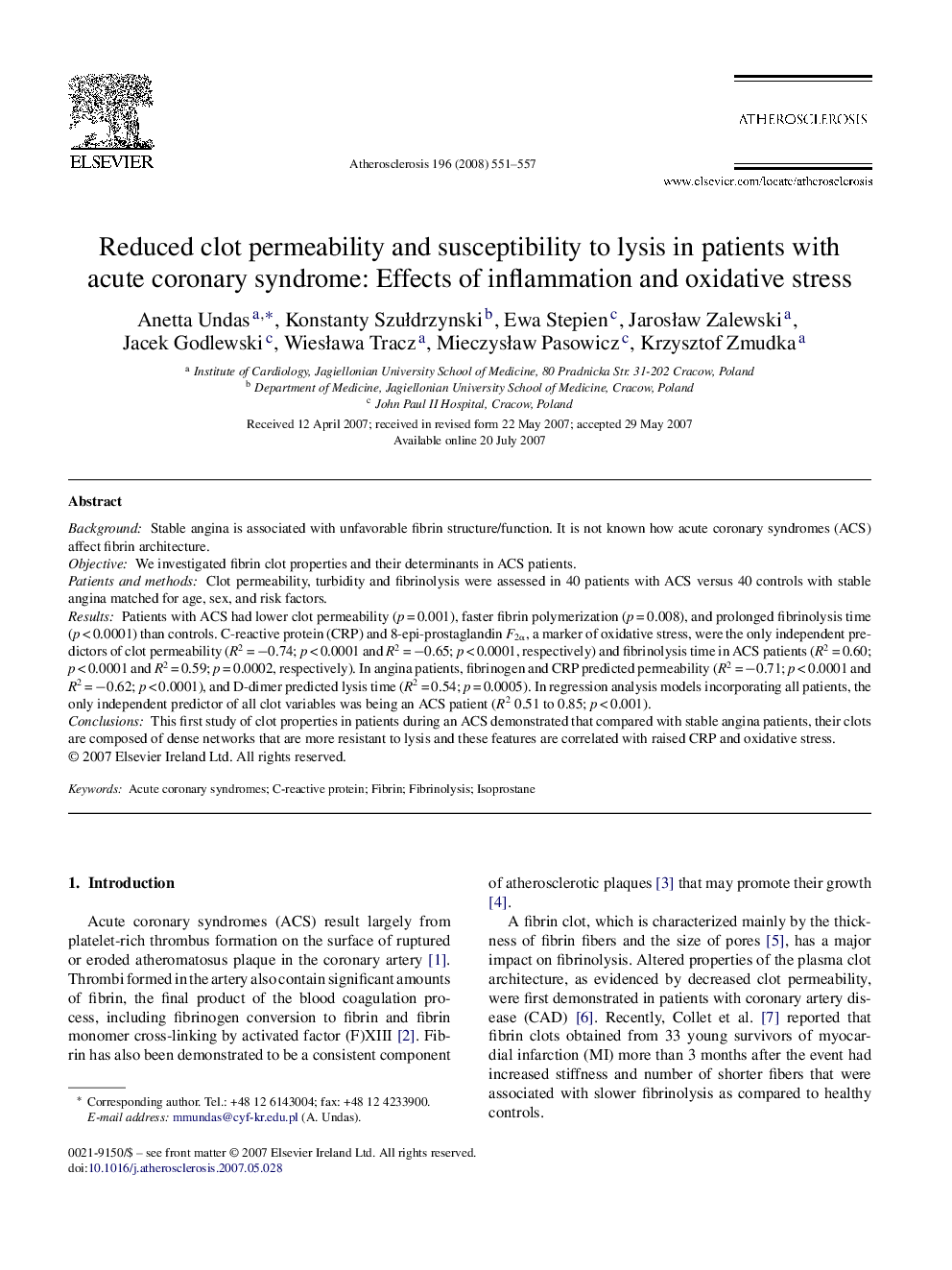| کد مقاله | کد نشریه | سال انتشار | مقاله انگلیسی | نسخه تمام متن |
|---|---|---|---|---|
| 2894020 | 1172425 | 2008 | 7 صفحه PDF | دانلود رایگان |

BackgroundStable angina is associated with unfavorable fibrin structure/function. It is not known how acute coronary syndromes (ACS) affect fibrin architecture.ObjectiveWe investigated fibrin clot properties and their determinants in ACS patients.Patients and methodsClot permeability, turbidity and fibrinolysis were assessed in 40 patients with ACS versus 40 controls with stable angina matched for age, sex, and risk factors.ResultsPatients with ACS had lower clot permeability (p = 0.001), faster fibrin polymerization (p = 0.008), and prolonged fibrinolysis time (p < 0.0001) than controls. C-reactive protein (CRP) and 8-epi-prostaglandin F2α, a marker of oxidative stress, were the only independent predictors of clot permeability (R2 = −0.74; p < 0.0001 and R2 = −0.65; p < 0.0001, respectively) and fibrinolysis time in ACS patients (R2 = 0.60; p < 0.0001 and R2 = 0.59; p = 0.0002, respectively). In angina patients, fibrinogen and CRP predicted permeability (R2 = −0.71; p < 0.0001 and R2 = −0.62; p < 0.0001), and D-dimer predicted lysis time (R2 = 0.54; p = 0.0005). In regression analysis models incorporating all patients, the only independent predictor of all clot variables was being an ACS patient (R2 0.51 to 0.85; p < 0.001).ConclusionsThis first study of clot properties in patients during an ACS demonstrated that compared with stable angina patients, their clots are composed of dense networks that are more resistant to lysis and these features are correlated with raised CRP and oxidative stress.
Journal: Atherosclerosis - Volume 196, Issue 2, February 2008, Pages 551–557